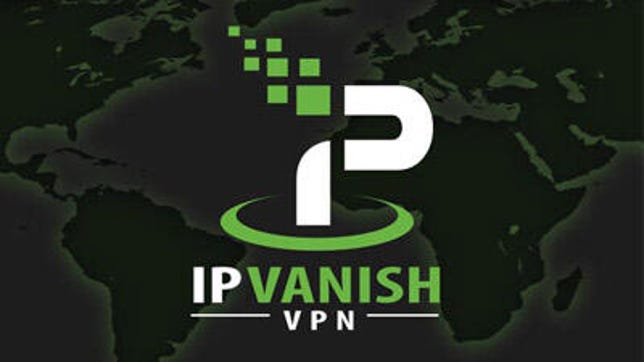If you’re new to VPNs or just want basic online privacy without having to contend with tons of gimmicky features, IPVanish is a decent choice. (Disclosure: IPVanish is owned by CNET’s parent company, Ziff Davis.) IPVanish delivers consistent performance across platforms and is mostly effective for streaming. However, my most recent evaluation of IPVanish revealed that there’s still a lot the company can do to improve its service. I found that IPVanish covers the basics that you’d expect from a VPN, but I’d like to see improved speeds, a larger server network, a cleaner app experience, a stronger commitment to privacy, and transparency and better overall value.

6.4
IPVanish
Like
Unlimited simultaneous connections
Planned privacy improvements
Good for streaming
24/7 customer support with live chat and phone support
Don’t like
US jurisdiction (14 Eyes)
Data collection practices unsuitable for privacy-critical users
Pricey for what you get
Relatively slow speeds
Clunky app
I evaluated IPVanish by performing in-depth testing of its client apps across various platforms, running more than 250 individual speed tests and looking for DNS leak tests on multiple VPN servers. I also tested IPVanish’s streaming performance through various server locations on many of the most popular streaming sites. I assessed the VPN service’s overall value and scoured its terms of service and privacy policy to determine how the company handles user data.
Ultimately, I was underwhelmed by how little IPVanish has improved its service over the past couple of years. Apart from a few minor enhancements, IPVanish is basically the same service it was two years ago. Compared to how rivals like ExpressVPN, NordVPN and Surfshark have pushed the boundaries over that same time period, IPVanish has lagged behind significantly. It’s also comparatively expensive — for the same price or even cheaper, you can get a VPN that trounces IPVanish in nearly all areas. As a result, IPVanish no longer makes the cut as one of CNET’s best VPN recommendations. Read on to take a deep dive into IPVanish’s offering.
Speed: One of the slower VPNs we tested
- 44% speed loss in spring 2024 tests
- Number of servers: 2,400-plus
- Number of countries: 56
Using a VPN will slow your speeds — often by 50% or more. The fastest VPNs, like NordVPN and Surfshark may cut your speeds by 20% or less. Slow VPN download speeds may result in buffering while streaming content, long download times while torrenting, excessive lag while gaming or dropped video calls.
IPVanish’s speeds have been consistently unremarkable over the past few years. In 2020, we registered a 65% speed loss, and in 2022, a 58% speed loss — both readings far slower than what we’d typically like to see from a VPN. IPVanish’s speeds were considerably better in 2023, when we measured a 26% speed loss, but regressed once again in our latest tests where we calculated a 44% average speed loss.
I ran a total of 252 speed tests in my latest round of testing and compared the speeds I got through IPVanish servers in New York, the UK, France, Germany, Australia and Singapore to the speeds I got through my regular Wi-Fi connection from my testing location in Ohio. I tested IPVanish’s speeds through both OpenVPN and WireGuard protocols on my MacOS and Windows tester machines. As expected, speeds were generally fastest to New York, which is the closest out of the group of servers I tested to my physical location. Speeds to locations farther away like the UK and Europe were slightly slower, and the slowest speed readings I got across platforms and protocols were through distant server locations like Australia and Singapore.
Also as expected, the speeds I registered through WireGuard were faster on average than they were through OpenVPN. WireGuard is a lightweight VPN protocol that’s built for speed, whereas OpenVPN’s code is considerably bulkier and typically results in slightly slower speeds. If your main objective is optimal speeds, then go with WireGuard, but if your privacy needs are critical or if you need to bypass firewalls, then OpenVPN is the way to go.
The fastest speeds I registered were through WireGuard on MacOS, averaging a 17% speed loss. That’s decent but not competitive with the speeds we calculated with NordVPN’s WireGuard-based NordLynx protocol (3% speed loss) or with ExpressVPN’s proprietary Lightway protocol (7% speed loss) on my Mac. I calculated an average 33% speed loss through WireGuard on my Windows machine, which is slow — especially for WireGuard. IPVanish’s OpenVPN speeds were even more disappointing, resulting in a 58% speed loss on MacOS and a 67% speed loss on Windows. Although OpenVPN speeds tend to be somewhat slower than WireGuard, you should expect far better OpenVPN speed performance from your VPN provider than what I experienced with IPVanish.
Overall, speeds were pretty stable across platforms and protocols, with a few exceptions. Speeds to the UK on MacOS through OpenVPN were surprisingly sluggish for some reason, even though the servers didn’t appear to be overly congested. I consistently measured VPN speeds of around 52 Mbps to the UK on my 370 Mbps base connection. Through OpenVPN on Windows, I measured about 95 Mbps to the UK, which is slightly better, but still quite underwhelming. WireGuard speeds to the UK were more favorable at 333 Mbps (MacOS) and 274 Mbps (Windows). Also, I noticed that speeds to Germany and Australia were somewhat unstable, fluctuating significantly from one speed test to another, regardless of which platform or protocol I was using. Minimal speed fluctuations to distant servers like Australia may be expected from time to time, but I would have expected speeds through German servers to be much more stable than what I measured. VPN speeds can fluctuate from one test to another, but you’ll likely get far more consistent speeds through a VPN like NordVPN or ExpressVPN than you will with IPVanish.
Optimal Location: A performance upgrade over IPVanish’s previous Quick Connect feature
In my previous review, I noted that IPVanish’s Quick Connect feature was fundamentally flawed, in that it often did the opposite of what it was purportedly designed to do. Instead of connecting to the fastest available server in a particular location, clicking on the Quick Connect button would consistently connect me to a server that was considerably slower than others in the same location. I would need to manually connect to a server with a light load and a low ping to achieve optimal speeds.
However, IPVanish seems to have since remedied the situation. IPVanish has revamped its apps and upgraded its Quick Connect feature with what it now calls Optimal Location. In my testing, I was happy to discover that the Optimal Location feature appeared to consistently connect me to a fast server in the specific locations I tested, including in France and the UK where the previous Quick Connect feature invariably failed.
IPVanish told me via email that the optimal location feature looks for speed, low ping and server load among other elements. “If we only connected users to the fastest server, it would quickly become overloaded and thus, no longer be the fastest server,” the company said. “So we help provide a default option to customers to connect to the most ‘optimal location’ based on a variety of factors.”
Key takeaway: Don’t count on IPVanish’s speeds to get you anywhere in a hurry, even if you’re using WireGuard. And OpenVPN speeds were so abysmal that you may be left frustrated when doing anything data-intensive through the protocol with IPVanish. If your primary objective in a VPN is fast speeds for things like streaming, gaming or torrenting, I’d recommend trying a fast VPN like NordVPN, Surfshark or ExpressVPN.
Cost: IPVanish doesn’t deliver a ton of value for the price
- $13 per month, $48 for the first year (then $90 annually) or $72 for the first two years combined (then $90 annually)
- Money-back guarantee: 30 days (only for one- and two-year plans)
- Payment options: Credit card, PayPal, Google Pay
- Apps available for Windows, MacOS, Linux (CLI), Chrome OS, Android, iOS, Fire TV, Apple TV
IPVanish isn’t quite as expensive as pricey VPNs like ExpressVPN or NordVPN, but it’s still fairly expensive for what you get. A monthly subscription costs $13, which is the same as ExpressVPN and NordVPN, but more expensive than the $10 per month that ProtonVPN charges or the $5 per month for Mullvad. IPVanish’s yearly plan costs $48 for the first year, then almost doubles in price to $90 per year afterward. If you opt for the two-year subscription plan, you’ll pay $72 for the first two years combined, then the regular $90 per year after the initial two-year term. However, CNET doesn’t recommend signing on with any VPN provider for more than a year at a time because things tend to shift quite rapidly in the VPN space. Performance may fluctuate, features may come and go, terms of service may change or the VPN could change ownership. A one-year plan generally offers good savings over the monthly price while still allowing you flexibility at the end of your plan.
But if you’re determined to go for the two-year plan anyway, I’ll let you in on a little trick that can get you your first two years for $60 instead of $72. The IPVanish site offers a discount if it thinks you’re about to leave the page. First, select the two-year plan from the pricing page. That’ll take you to the checkout page where you’ll need to scroll down just a bit, then move your cursor toward the top of the page as if you’re about to click away from the checkout page. This action will trigger an exit popup offering 25% off the initial two-year payment (resulting in a $60 charge for the first two years combined). Note that I was able to make this work only on desktop and not on a mobile device. And if you missed the popup and closed out of the page before clicking on the coupon, just open an incognito window and it’ll show up again. The coupon also features a 10-minute countdown timer, but the timer is inconsequential because I was still able to access the $60 price long after the 10 minutes expired.
Unlike Surfshark’s (and to a degree, NordVPN’s), IPVanish’s pricing structure is transparent. The company makes it clear on its checkout page that the one- and two-year plans renew at a price that’s different than the introductory price — and offers a prominent link to the applicable renewal prices right at checkout instead of burying it like some other companies do.
If you’re unsatisfied with the service, you can get a full refund if requested within the first 30 days of purchase — but only with the yearly or two-year plans. This is a bit of a disappointment because most other VPNs’ 30-day money-back guarantees apply to all of their subscriptions, including the monthly plan. However, IPVanish indicates on its Money-Back Guarantee page that monthly subscribers can contact customer service to make their case and still get a refund within the first 30 days.
IPVanish’s payment options are also somewhat limited. While many other VPNs accept cryptocurrencies and other alternative payment methods, IPVanish does not. You can pay for an IPVanish subscription only with a credit/debit card, PayPal or Google Pay, which may be a deal-breaker if you want to stay as private as possible and sign up for the VPN with bitcoin or other cryptocurrencies.
IPVanish offers apps for a variety of devices
Apps are available for Windows, MacOS, Chrome OS, Android, iOS, Amazon Fire TV and Apple TV. Linux users can use IPVanish through the command line interface rather than a full graphical user interface, which could be suboptimal for Linux enthusiasts who prefer a full GUI experience. If that’s you, I’d suggest trying another option like Surfshark or PIA — both of which offer a full Linux GUI.
IPVanish’s desktop and mobile apps deliver a fairly consistent experience across platforms, with a few slight differences. Each app features a Home screen with a prominent Connect button that will connect you to your optimal server the first time you fire up the app. Afterward, the Home screen connect button will connect you to the last location you were connected to. To connect to a specific server, you can go to the Locations tab and either scroll to your desired location from a list of servers or use the search bar to type in a specific country or city.
Though the overall app experience is largely the same, you’ll notice differences in feature availability and functionality if you’re using IPVanish on various platforms. For instance, split tunneling isn’t available on MacOS, and the kill switch is available only on MacOS if you’re using the OpenVPN protocol. The kill switch on Android needs to be enabled at the system level (in your Android settings) and won’t allow any internet access unless you’re connected to an IPVanish server. Similarly, the kill switch on Windows automatically cuts your internet connection unless you connect to a server, but you can enable it directly from the app instead of doing so from your system settings.
All features worked as expected during my testing, and I found the apps to be mostly easy to use. That said, I can see the two separate Connect buttons in the Locations tab on the desktop apps potentially causing some confusion. You can be connected to a server that you chose manually, and the Connect button for the Optimal Location feature still says “Connect” even though you’re already connected to a server. I get it that it’s giving you the option to connect to the Optimal Location, but if you’re just glancing at the app interface to ensure you’re connected to the VPN, it may cause a little bit of confusion (even though there is a rather inconspicuous indication at the top of the app that you’re connected). Other apps, like ExpressVPN and Surfshark make it obvious that you’re connected to a server even at a quick glance.
The design of the mobile apps may also create a certain amount of confusion. If you’re on the home screen on the mobile app, it’s obvious whether you’re connected. However, if you navigate over to the Locations tab, there’s no indication whatsoever whether you’re connected or not. What’s more, if you’re connected to the Optimal location and head over to the Locations tab, the Optimal Location Connect button still says “Connect” as if you’re not already connected to the server.
IPVanish’s streaming capabilities are serviceable, though slow speeds can cause headaches
I was able to access most of the streaming content I tried to watch with IPVanish, with just a few hiccups. While connected to IPVanish servers, I had no issues streaming content on some of the most popular streaming platforms, including Netflix, Disney Plus, Amazon Prime Video, Hulu and Apple TV Plus. I was able to watch the new Fallout series on Amazon Prime Video and The Book of Boba Fett on Disney Plus on IPVanish’s US servers. I was also able to watch lots of regional Netflix content, including Better Call Saul and Seinfeld through US servers, Hungarian comedy Riviera East on Hungarian servers ,and Dexter and Schitt’s Creek on Japanese servers.
However, I noticed that some of the streaming sites took a while to load, especially to distant servers like Japan. Netflix content wouldn’t load at all through UK servers on Amazon Fire TV stick, which could be related to the speed issues I encountered when connecting to the UK. Also, Netflix detected the VPN and blocked access to content when I was connected to Canadian servers on Amazon Fire TV Stick. If you’re a streaming fanatic, there are better options — like ExpressVPN and NordVPN — but IPVanish works most of the time, despite apparent speed issues resulting in longer load times. Also, IPVanish has servers in only 56 countries, far fewer than NordVPN (111 countries), ExpressVPN (105 countries) and Surfshark (100 countries). So if you’re looking to optimize your worldwide streaming capabilities, you may want to look elsewhere.
Key takeaway: IPVanish’s steep pricing is hard to justify compared with providers that offer more at that price or cheaper. Its server network is small, its speeds sometimes interfere with its streaming capabilities and its updated app seems to have regressed in certain ways compared with earlier iterations. In my opinion, you’re better off paying a little more for ExpressVPN or NordVPN, or much less for a service like Surfshark or PIA.
Privacy and security: Planned improvements on the horizon
- Jurisdiction: USA
- Encryption: AES 256-bit
- Protocols available: OpenVPN, WireGuard, IKEv2, IPSec
- Latest tests: No leaks detected
IPVanish offers all of the industry-standard privacy protections that you would expect from a VPN, including DNS leak protection, a kill switch, AES 256-bit encryption and a no-logs policy. It even offers a few extras like obfuscation, Threat Protection and on-demand connections that many other top VPNs provide. It’s a solid VPN for beginners or for casual users just looking for basic online privacy. But if your privacy needs are critical, you may want to opt for a different provider like ExpressVPN or Proton VPN.
IPVanish is based in the US, a jurisdiction that is part of the 14-Eyes data sharing alliance, which may be a dealbreaker for privacy-critical users. The VPN is owned by CNET’s parent company Ziff Davis — which also owns other VPNs StrongVPN and Encrypt.me.
IPVanish’s privacy policy states that the company collects information like email address, name, billing address, credit card information, IP address and affiliate tracking data, along with aggregated anonymous data like a user’s language preference, device brand, device model, OS version, country, crash reports, session lengths, server usage, protocol, build version, UI interactions, API requests and response codes, and app build version to “improve the quality of its apps and services.”
The privacy policy also states that user information may be shared with “other businesses owned by Ziff Davis, Inc.” However, when I asked IPVanish if this meant that user data could be shared with any and all Ziff Davis businesses, a representative clarified that IPVanish “[does] not share information with any entities under Ziff Davis. Other IPVanish companies only include the Consumer Security businesses, specifically VIPRE Antivirus, StrongVPN, Livedrive and SugarSync. Information shared would include crash reports and analytics, feature requests to build new technologies, and customer support interactions to train agents. As the privacy policy mentions, this data is only used to enhance our services, whether technologically or operationally.”
According to IPVanish’s privacy policy, user information may also be shared with Ziff Davis businesses for the purpose of targeted advertising. IPVanish’s representative further clarified that the information sharing for advertising purposes would again only apply to the previously mentioned Ziff Davis businesses and would consist of “email offers if a user has previously canceled their IPVanish service or has indicated interest in other cybersecurity protections (antivirus, encrypted backup, security awareness education, etc.)” You can opt out of the sharing of your information for targeted advertising by filling out the form in IPVanish’s Privacy Portal.
Although IPVanish’s representative said that crash reports and aggregated data collection are not enabled by default, I noticed that I was opted into both by default on the Windows app, after a fresh install of the latest app version. Data collection was disabled by default on MacOS and iOS, and I couldn’t find anywhere to opt in or out on Android. If you’re on Windows and don’t want the app to collect crash reports or any aggregated “anonymous” data, then click on Settings, then Application and scroll down to Telemetry to opt out.
The level of data collection and sharing that IPVanish employs is a concern, especially for a privacy company — and especially when other VPNs like ExpressVPN and Mullvad go out of their way to not share user information.
Privacy and transparency improvements coming
IPVanish says it employs a strict no-logs policy wherein it doesn’t collect, monitor or log users’ online activity when connected to its servers. But as with any VPN’s no-logs policy, such a claim is impossible to verify with 100% certainty. However, independent audits can help establish trust in a VPN provider’s no-logs claims (even if they can only be verified during the timeline of the actual audit.)
IPVanish had its no-logs policy certified in an independent audit by Leviathan Security Group in April 2022. While it’s helpful to be independently audited, IPVanish’s one and only independent audit to date was completed over two years ago. Ideally, we’d like to see a more regular annual audit cadence to build trust and provide consistent documentation of a VPN provider’s commitment to privacy. Also, the full audit report is accessible only to IPVanish customers. This means that, instead of making it publicly available, you have to purchase a subscription and provide personal information to gain access to the full report. Most other VPNs, like ExpressVPN and Surfshark make their audit reports available to the general public, helping to bolster transparency and a greater sense of trust in the provider.
However, an IPVanish representative told me that the VPN is undergoing a fresh audit in 2024 and will broadcast the results to a wider audience.
“We maintain high privacy standards and do not frequently alter our systems in ways that necessitate routine re-auditing,” IPVanish said. “However, as a commitment to continuous improvement and transparency we are currently just starting a comprehensive audit of our apps and infrastructure in 2024. The results will be shared with both IPVanish subscribers and media partners, ensuring widespread communication of our practices.”
In addition to the forthcoming audit, IPVanish is planning on a few more privacy improvements in 2024, including expanding its MacOS kill switch functionality to other protocols by June (currently available only on MacOS through OpenVPN) and a transition to a RAM-only server infrastructure by the end of the year. The transition to RAM-only servers is significant and a big step toward ensuring user privacy. With RAM-only servers, data is never stored on a hard drive and completely wiped with every reboot, making it even more difficult to capture user data.
Privacy features work well, but one potential security gap exists
During my testing, the kill switch worked well on all platforms, the Threat Manager feature helped block ads, and I detected no leaks. Be aware that the kill switch is turned off by default, so you’ll need to manually enable it in the IPVanish app (which I highly recommend for optimal privacy). I was happy to see that DNS leak testing sites no longer identified the IPVanish host like they did when I tested for leaks for my previous review. While the identified hostname didn’t constitute a DNS leak and didn’t expose user activity, it could have made users’ VPN use apparent to websites, schools, governments and network admins — a deal-breaker for privacy-critical users.
While that was a welcome improvement, I observed that the IPVanish Windows and Android apps did not display any kind of disconnection warning before I jumped from one server to another. If you switch from one server directly to another, the encrypted tunnel is broken prior to the app establishing the new connection. This means that even for the split second that the connection breaks during the server switch, your true IP address and online activity could be exposed — which can be a major privacy vulnerability if you happen to be engaged in any sensitive activity when you jump from one server to another. I confirmed this by jumping directly from one server to another while conducting a DNS leak test. The DNS leak test displayed my true IP address and location sandwiched in between the IPVanish server I jumped from and the IPVanish server I jumped to.
A seasoned VPN user is likely to anticipate the disconnection and close out of anything sensitive prior to making the server switch. However, some users may not be aware of the serious privacy risks associated with disconnecting from a server, even for a fraction of a second. IPVanish’s Android app confirms if you would like to connect to a specific server location if you choose one from the Locations tab. For example, if you click on Belgium from the Locations tab, a popup asks “Would you like to connect to Belgium?” and you can either confirm or cancel. If you then decide to hop over to Denmark, the same question will pop up: “Would you like to connect to Denmark?” Though there technically is a popup, there is no indication from the app that a disconnection is about to take place. It’s not enough to assume that the user will expect the VPN to disconnect during the switch.
IPvanish’s Windows app displays neither a disconnection warning nor any sort of popup asking to confirm the connection to another server. You can enable a notification that lets you know if a connection is manually disconnected. However, this notification is of no use in this case because it notifies you of the disconnection after you have already chosen to switch servers, at which point it’s already too late. The connection status indicator at the top of the Windows app does indicate that the VPN has disconnected, but again, it’s only after you’ve already initiated the server switch. IPVanish’s MacOS and iOS apps trigger a disconnection warning when you hop from one server to another before the disconnection actually occurs. I’d like to see a similar notification on Windows and Android, reminding users that a disconnection is about to take place and giving them a chance to close out of anything sensitive before hopping from one server to another.
Key takeaway: IPVanish has all of the privacy basics in place, but there’s plenty of room for improvement. I’m encouraged by the planned privacy and transparency improvements IPVanish’s representative told me were on the way — those will go a long way in improving user privacy and building trust. Though it’s fine for general privacy, I still wouldn’t recommend IPVanish to privacy-critical users.
IPVanish is an adequate option for beginners and anyone looking for basic online privacy
I like that IPVanish delivers a fairly consistent experience across platforms. It doesn’t include any flashy features or tons of options for customization, but it has everything that a beginner VPN user needs. The app itself can be clunky and confusing to use at first (compared with more streamlined apps like ExpressVPN and NordVPN), although once you get used to its little quirks, it’s easy to use, whether you’re new to VPNs or an experienced user. IPVanish is a good VPN for streaming, but I’d like to see faster speeds and an expanded server network — both of which would greatly enhance the streaming experience.
And while it’s got everything you need for basic online privacy, it doesn’t quite tick all of the boxes for users with critical privacy needs like journalists, dissidents, attorneys and whistleblowers. IPVanish even falls short in many ways for casual users, with its clunky app, slow speeds and modest server network. Overall, I’m still not convinced that the relatively high price is commensurate with the quality of the service at this time. That, in combination with the lack of significant improvement over the past couple of years is why IPVanish no longer ranks as one of CNET’s top VPN picks.
 meganwoolsey Home
meganwoolsey Home



